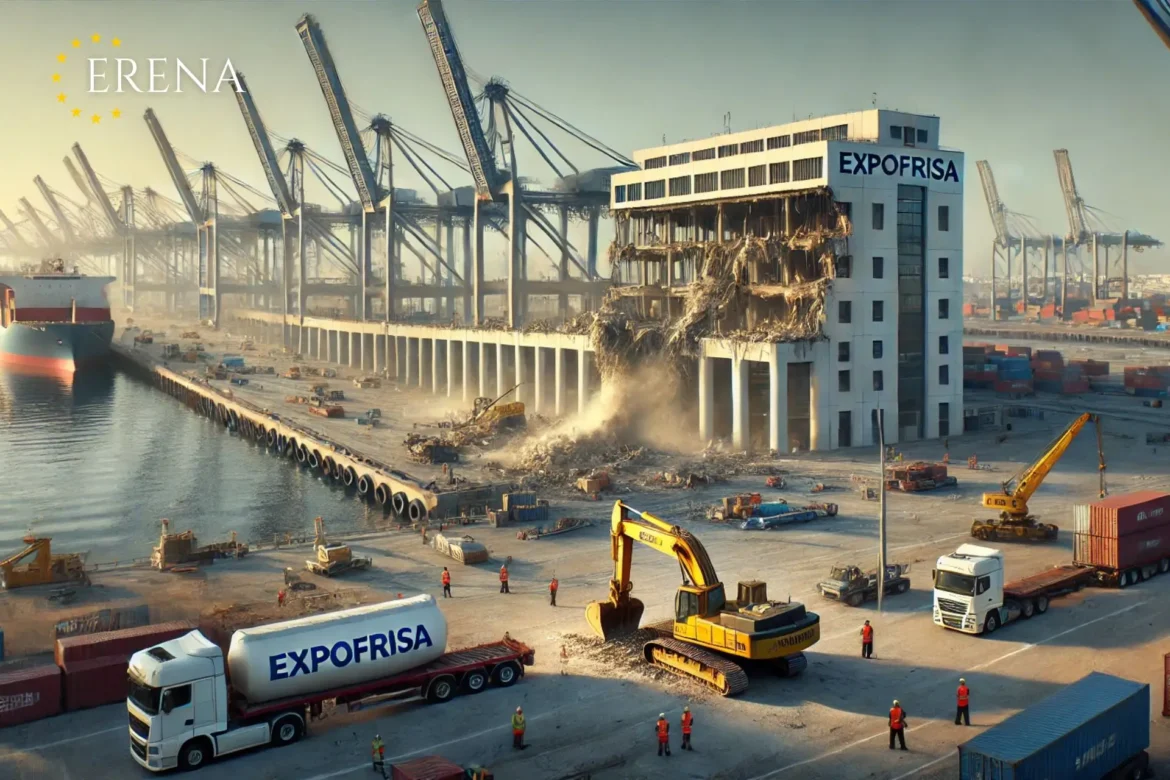The Port of Huelva continues its active infrastructure development. One of the key steps in this modernization process is the demolition of the Expofrisa building, located at Levante Dock. This project aims to enhance cargo transportation efficiency, improve environmental safety, and create new logistics facilities.
History and Role of the Expofrisa Building
For decades, the Expofrisa building served as a storage and processing center for frozen goods. Its strategic location at Levante Dock played a crucial role in ensuring efficient supply chains between Spain and international markets. However, over time, the building’s infrastructure became outdated, and its energy-intensive refrigeration systems no longer met modern environmental standards.
Reasons for Demolition
🔹 Physical Deterioration – The building is over 40 years old, making it technically obsolete.
🔹 Port Expansion – The site will be repurposed for modern logistics and commercial projects.
🔹 Environmental Standards – Outdated equipment consumes excessive energy and generates excess emissions.
🔹 Economic Efficiency – New infrastructure projects will be more beneficial than maintaining the old building.
Phases of the Expofrisa Demolition
✅ Preparation Phase – Utility disconnection, technical analysis, demolition planning.
✅ Main Demolition Phase – Structure dismantling, debris removal.
✅ Land Reclamation – Site clearing and preparation for new construction.
How Much Will the Demolition Cost?
💰 The total estimated cost of the project is between €1,000,000 and €1,500,000.
🔸 Preparation – €200,000 – €300,000
🔸 Demolition Work – €500,000 – €700,000
🔸 Debris Removal and Land Reclamation – €300,000 – €500,000
The project is funded by the Port of Huelva’s budget and private investors.
What Will Replace Expofrisa?
After the demolition of the Expofrisa building, the freed-up space will be used for modern infrastructure projects, including:
🔹 A New Logistics Center – High-tech warehouses with automated cargo handling.
🔹 Expansion of Cargo Terminals – Increased capacity for port operations.
🔹 Urban Waterfront and Commercial Zone – Possible development of business and tourism infrastructure.
What Benefits Will the Project Bring?
✔ Increased Cargo Traffic – The modernization will boost cargo volumes.
✔ Job Creation – The new projects will generate hundreds of new jobs.
✔ Environmental Efficiency – Modern technologies will reduce energy consumption.
✔ Attracting Investors – The improved infrastructure will drive regional economic growth.
Conclusion
📌 The demolition of the Expofrisa building is not just the removal of an outdated structure but a strategic step in the Port of Huelva’s development plan. The freed-up space will become a hub for new, high-potential projects that will increase the port’s competitiveness, attract investors, and strengthen the local economy.
💡 Infrastructure investments will pay off through increased logistics capacity, job creation, and higher cargo turnover.

